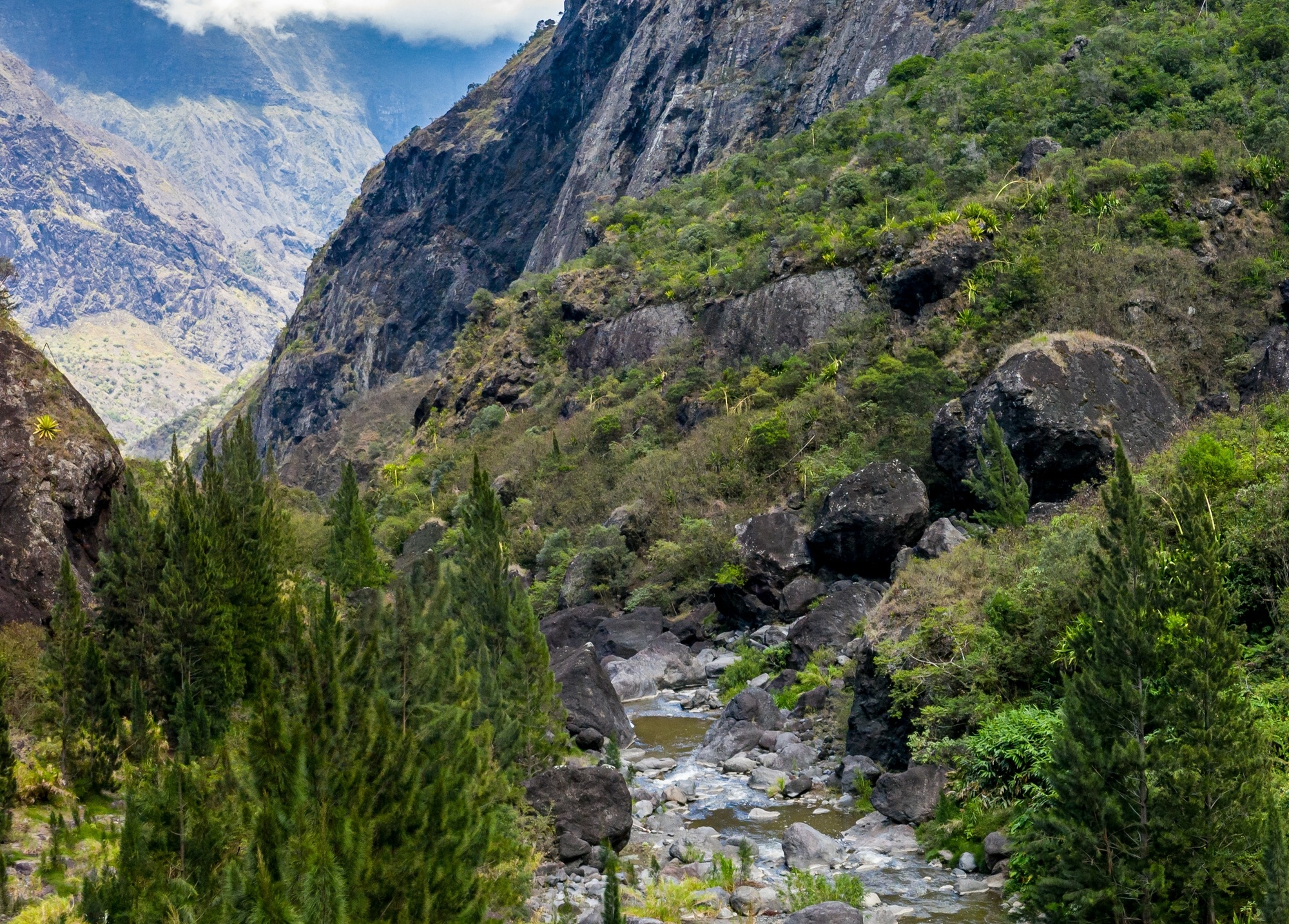
- Home
- Archaeology on Reunion Island
- Sites
- La Possession
- Mafate-les-eaux
The temporary "thermal baths" in Mafate were abandoned following a rock slide in the early 20th century. Archaeologists recently uncovered the remains of a section of the nearby village.
Discovery and use of the source
As thermal baths grew in popularity following the discovery of two hot springs – Cilaos in 1819 and Salazie in 1831 – a resurgence was identified in Mafate by a local resident in 1853. High in sulphur with a low flow rate and a temperature around 30°C, the spring was soon used for its reputed healing properties. A small thermal establishment was opened on the edge of the river; the water could be consumed directly from the spring or channelled to a small number of baths for treatments. People taking the waters would travel by sedan chair along the "colonial road" from the mouth of the Rivière des Galets and along its course.
A village, Mafate-les-eaux, with a permanent population and lodging houses for visitors grew up on the site; the wealthy residents of Saint-Paul also acquired plots to build second homes when it was fashionable to have "a change of air".
In 1913, a rock slide destroyed the village and the thermal baths and blocked the spring. Despite attempts to revive the thermal baths – the spring was cleared but covered by another rockfall in the 1930s – the site was permanently closed.
Rediscovery of the thermal village
The LiDAR survey of the Mafate cirque revealed structures on a small islet located in the same area as the former village. An archaeology survey was performed in 2020 and the remains of the upper part of the thermal village, spared by the rockfall, but now difficult to reach, were also discovered. Since many of the building materials were recovered when the site was abandoned, all that now remains are house bases and a few foundations. The few portable finds confirm its use in the 19th century; archaeobotanic observations also suggest ornamental plants were grown solely in this formerly inhabited area, in contrast to the surrounding vegetation.
Associated media
Open Media Library

General view towards the south (La Possession, Mafate-les-eaux, 2020)

Mafate sulphurous springs

Sedan chair, Mafate

The Bidel family house, Mafate

Remains of the Maison Bidel (La Possession, Mafate-les-eaux, 2020)

General plan (La Possession, Mafate-les-eaux, 1904)

Panorama (La Possession, Mafate-les-eaux, 1905)

Panorama (La Possession, Mafate-les-eaux, 2020)

Vue de Mafatte après l'Eboulis [sic] (View of Mafatte after the rock fall)

House substructure (La Possession, Mafate-les-eaux, 2020)

